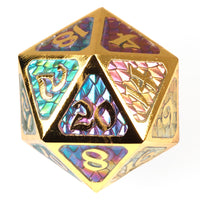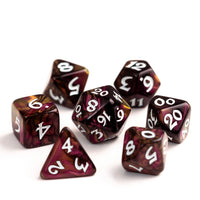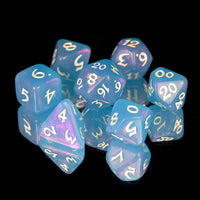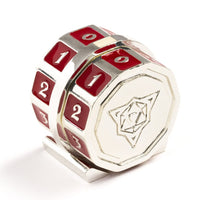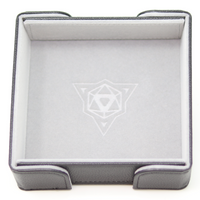Dice Through the Ages: Ancient Civilizations to Modern Tabletops
Once upon a time, in a realm of imagination and adventure, a craft arose that would change the course of fate and fortune – the art of creating dice. Join me, brave adventurers, as we journey through the ages to unveil the mystical history of these small, yet powerful totems that have guided the destinies of kings and commoners alike.
In Ancient times...
In the ancient lands of Mesopotamia, where the first civilizations sprouted, the seeds of the dice's legacy were sown over six millennia ago. Made from humble materials like fruit pits, pebbles, and seashells, these rudimentary dice served as tools for both gaming and divination. The people sought the counsel of these artifacts, believing them to be the voice of the gods.
From Mesopotamia, the use of dice spread to the land of the pharaohs. In the mystical realm of ancient Egypt, the game of Senet emerged, one of the oldest known board games, played with dice. The Greeks and Romans, too, adopted these small tokens of fate for their games and gambling pursuits.
As we traverse the annals of time, we encounter dice crafted from the bones of fallen beasts. The Egyptians, Greeks, and Romans carved small cubes from the ankle bones of sheep and goats, marking them with dots or symbols to signify numbers. Dice were no mere playthings in these cultures; they were instruments of divination and religious ceremonies, entwined with the realms of the divine.
Dice in the time of Castles...
Our journey brings us to the medieval courts of Europe, where dice assumed new forms and materials. Ivory, bone, and wood became the canvas upon which craftsmen etched intricate designs, elevating these gaming tokens to objects of art. The nobility reveled in games of chance and skill, wielding these beautiful dice as symbols of their standing.
The Renaissance heralded a new age of sophistication for dice, as they were forged from precious metals like gold and silver. These glittering treasures became the playthings of royalty, symbols of wealth and power. Mathematics and probability theory blossomed, transforming how people perceived games of chance and the role of dice.
As we venture into the modern era, the evolution of dice continues. Crafted from diverse materials such as plastic, metal, and even electronic components, they have transcended their origins as gaming and gambling tokens. Dice now serve a range of purposes in mathematics, science, and engineering, touching every aspect of human endeavor.
Throughout history, different cultures and time periods have favored various shapes, sizes, and materials for their dice. Bone dice were favored by the ancient Romans, while the Chinese preferred ivory. In medieval Europe, dice were crafted from lead or pewter, adorned with symbols or numbers to guide the hands of fate.
Dice have served creative and ingenious purposes across the ages. During the dark days of World War II, British intelligence officers wielded specially designed dice to escape the clutches of German prisoner-of-war camps. These rigged dice, always rolling a predetermined number, allowed the officers to win games and gain the trust of their captors, ensuring their freedom.
From their humble beginnings as animal bones, dice have evolved into intricate works of art and tools of divination. The Egyptians carved ivory dice, while the Greeks and Romans used bone, ivory, and bronze to create their tokens of fate. Dice were not only used for gambling, but also for fortune-telling, with the ancient Greeks and Romans believing that the roll of the dice was the will of the gods.
As the popularity of dice games surged, so too did the demand for ever more elaborate and decorative dice. The 16th century saw the creation of precious metal dice, adorned with jewels and intricate designs, reserved for the hands of royalty and the wealthy elite.
Enter, the Dragon!
In the 1980s, a new era for dice was ushered in with the advent of the iconic 7-piece Dungeons & Dragons dice set. This ensemble of polyhedral dice, indispensable to adventurers around the world, consists of a four-sided die (d4), a six-sided die (d6), an eight-sided die (d8), a ten-sided die (d10), a twelve-sided die (d12), and a twenty-sided die (d20). Each die serves a unique purpose in the game, from determining damage to assessing the success of a skill check. Such is the renown of the 7-piece D&D dice set that it has become a staple in countless other tabletop games.
And so, dear adventurers, we have reached the end of our journey through the epochs of dice. From their humble origins as simple tokens of chance, dice have evolved into valuable companions in games, math education, science, and engineering. Their legacy is a testament to human ingenuity, the enduring allure of chance, and the eternal quest for knowledge and mastery over fate.
